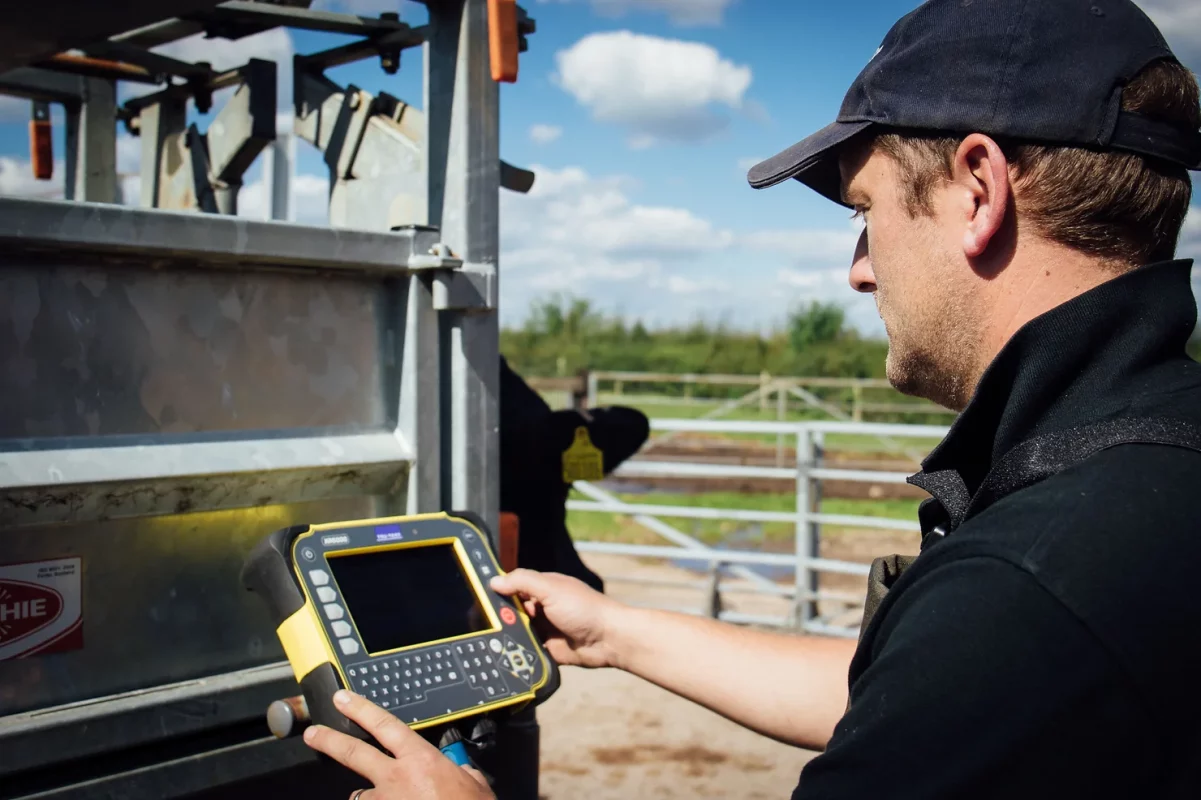Breeding Management, Farming Equipment, Tags
Weighing to Reveal Health, Nutrition and Genetic Improvements
Accurately recording an animal’s weight has become easier with modern handling equipment such as cattle crushes, weigh platforms, and squeeze crates fitted with digital scales. When integrated with EID panel or stick readers, these systems enable meaningful data capture such as weight, that provides valuable insights for livestock producers. In the UK, capital grant schemes also regularly support the purchase of digital weighing and EID solutions.
“The Tru-Test XR5000 is a game changer, collecting and delivering as much or as little information as you want. I like to see Daily Liveweight Gain, Average Liveweight Gain, Sire / Dam, UK Tag number and health status”.
Ian weighs every animal off the farm too when selling to abattoir or for breeding, he then stays to see them graded so he can get a good idea of confirmation and carcass quality and ensure that the sire and confirmation are working for him.
“I use the Datamars Livestock app and needed 0.8kg of DLWG not 1kg DLWG last winter on my store cattle in order to meet my month and weight goal, which is to kill between 16 -22 months, this saves on concentrate usage and saves money. We utilise this information talking to our feed supplier and fine tune our ration. By weighing every three weeks, a clear indication can be seen onscreen from the graphs seeing if the feed is delivering what we hope. Regular weighing at Mobberly also reveals any underlying health or nutritional deficiencies quickly so intervention can take place sooner”.
By staying with the bulls at kill and seeing them graded he can see how his weights are comparing to the end kill weight, plus he can see more from his Sire & Dam when a carcass is hanging up as Ian is striving for a more efficient cow who eats less but still produces quality offspring.
Weighing & Health
The degree of a parasite burden can also be determined by regular weighing backed by other symptoms, pasture history and Faecal egg counts (FEC) etc. Weighing pre-treatment also makes sure that treatment is delivered correctly. Treating to the heaviest in the mob and splitting the group by weight if necessary. This ensures product efficacy and reduces the risk of resistance build up. The most common cause of underdosing sheep is by estimating bodyweights (Source; SCOPS).
Weighing along with Body Condition Scoring (BCS) is also useful in planning and monitoring the condition of the flock pre-tupping and this can even pre-empt an early weaning decision to ensure ewes are in the right condition and if possible, on a rising plain of nutrition pre-tupping.
Weighing & Nutrition
Poor lamb DLWG and other clinical symptoms scan point to trace element deficiencies in cobalt, copper, and vitamin E and selenium. Cobalt-deficient lambs can also have high levels of gut worms present (parasitic gastroenteritis or PGE) requiring anthelmintic treatment. Often, a relationship exists between their cobalt deficiency and inability to internally manufacture sufficient vitamin B12 in the rumen due to their worm burden and heavy scouring for example. They also respond poorly to vaccinations and be more susceptible to clostridial diseases such as pulpy kidney and pneumonia. Supplements are extremely low in cost compared to production losses from poor growth and delays in finishing costing in excess of £10-£15 per lamb. (Source; NADIS).
Weighing & Genetics

In dairy units, weighing identifies animals that mature quicker and can enter the milking herd much quicker. Reared dairy heifers that thrive and grow faster can be weaned sooner without detriment to their development into a mature cow. Quicker weaning as long they are at the required target weight, aids rumen development as they are eating forage quicker and assists in their growth to their next weight KPI which is their bulling weight. Getting them in-calf at the correct weight when younger gets them to their first lactation and subsequent ones faster too. They also have more chance of remaining in the herd longer and fulfilling their genetic potential by reaching these key milestone weight KPI’s.


